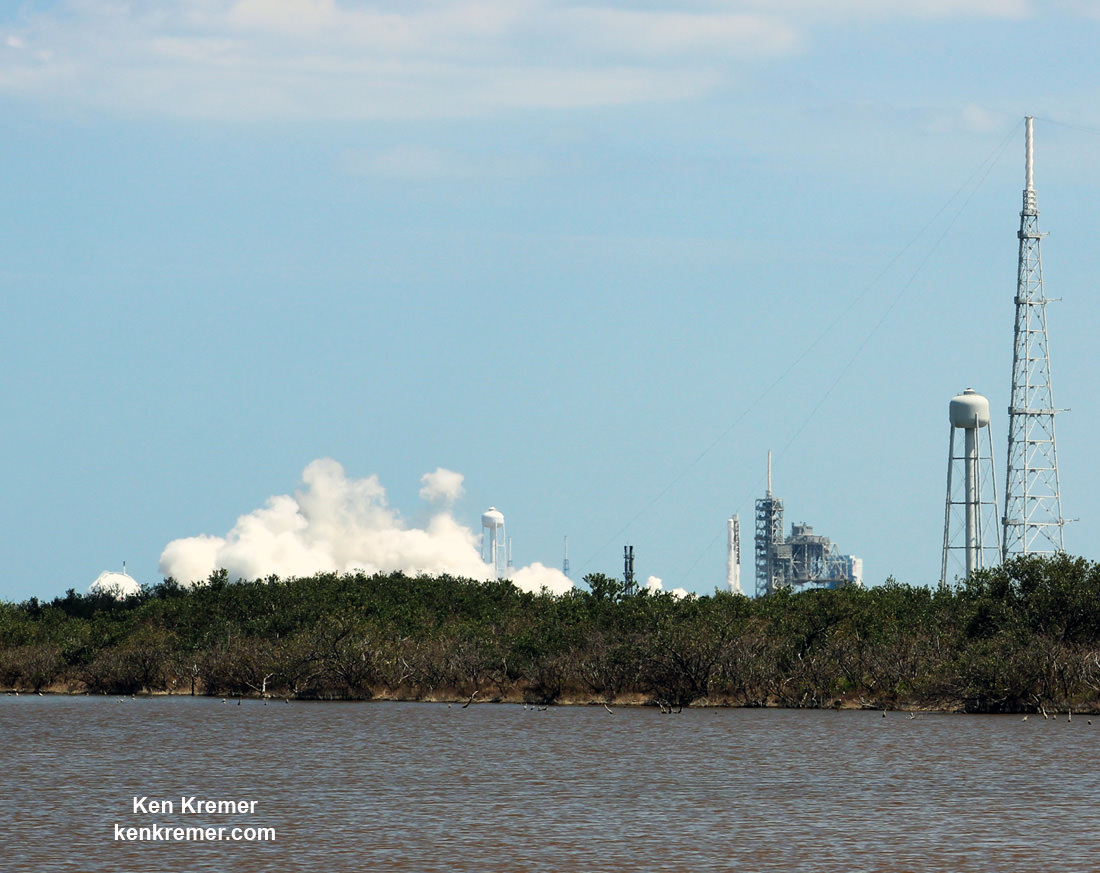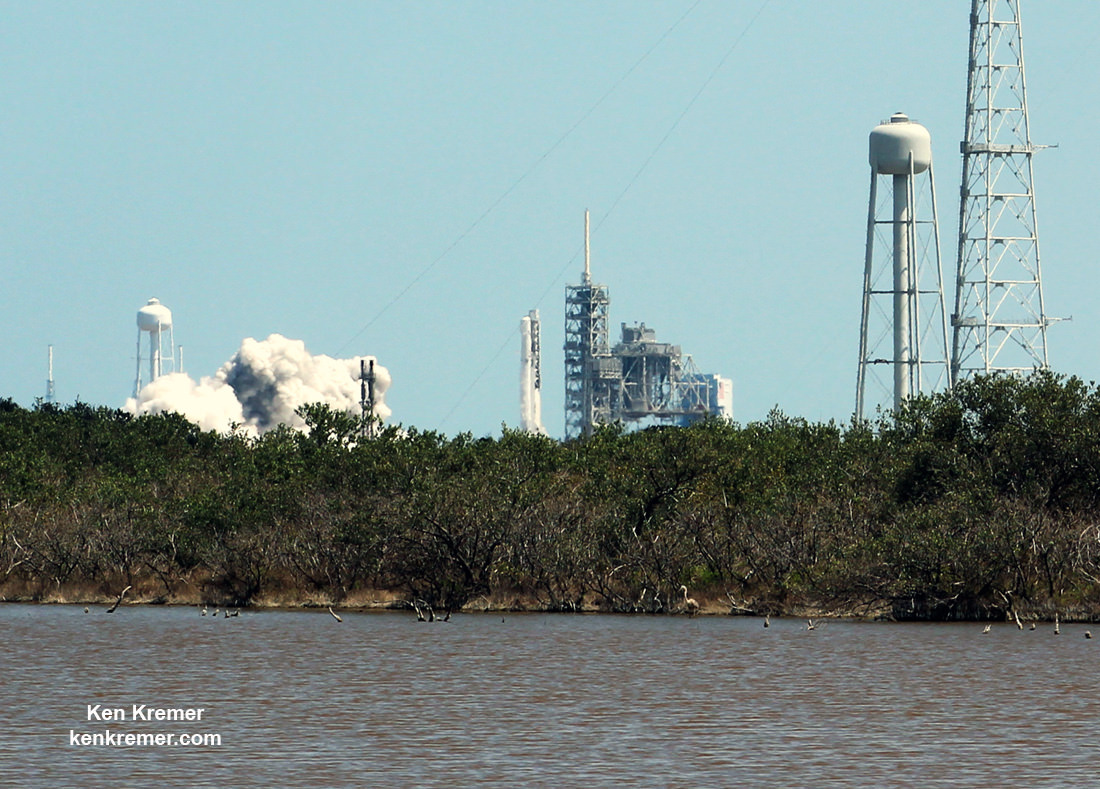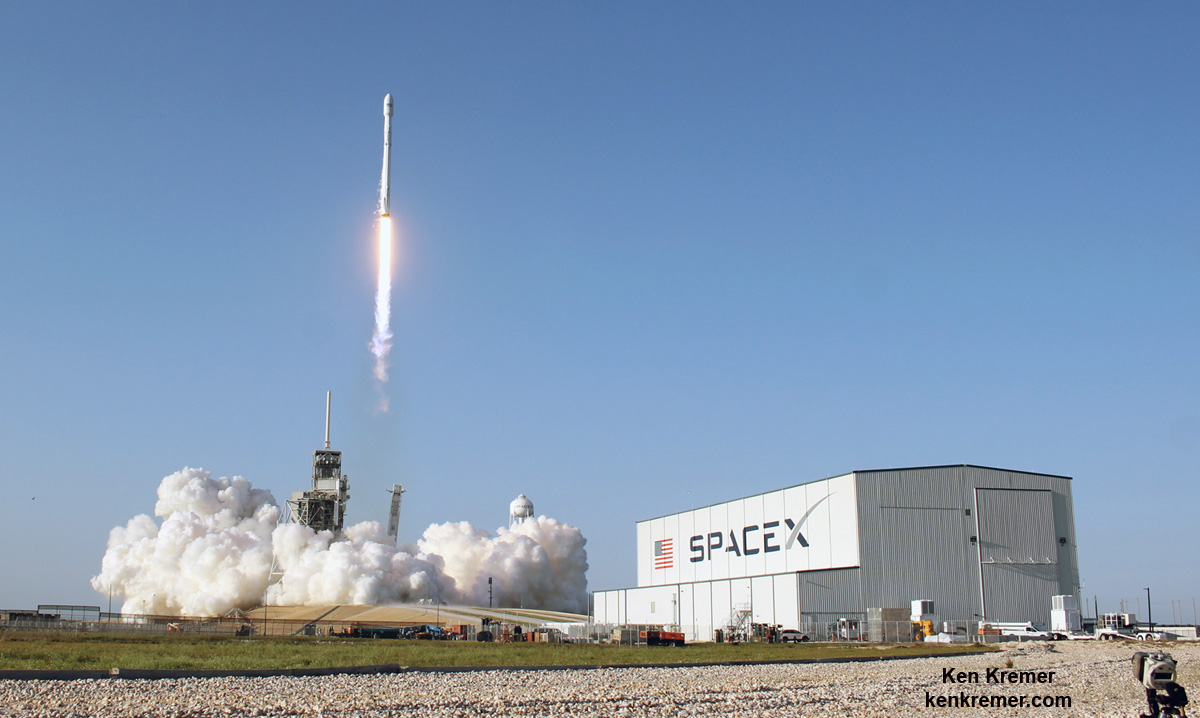
MERRITT ISLAND NATIONAL WILDLIFE REFUGE, FL – Elon Musk’s SpaceX is primed for another significant space first; the firms first launch of a spy satellite for the US governments super secret spy agency; the National Reconnaissance Office, or NRO – following today’s successful static hotfire test of the Falcon 9 launchers first stage booster.
Tuesday’s hotfire test to took place shortly after 3 p.m. this afternoon, April 25, at SpaceX’s seaside Launch Complex 39A at NASA’s Kennedy Space Center in Florida.
The successful test paves the path for launch of the NROL-76 classified payload for the NRO atop a SpaceX Falcon 9 rocket this Sunday morning, April 30 from pad 39A.
“Static fire test complete,” SpaceX confirmed via social media just minutes after finishing the brief test at 3:02 p.m. EDT (1902 GMT).
“Targeting Falcon 9 launch of NROL-76 on Sunday, April 30.”
The engine test is conducted using only the first two stages of the rocket – minus the expensive payload in case anything goes wrong as like occurred during the catastrophic AMOS-6 static fire disaster last September.
The test is routinely done so that SpaceX engineers can confirm the readiness of the rocket and all its systems to safely and successfully launch the specified payload to its intended orbit.
Furthermore this launch is also notable because it features the next land landing by a SpaceX Falcon 9 first booster back at the Cape for only the fourth time in history – which also makes for an extremely thrilling experience – and unforgettable space enthusiasts event.
So by all means try to witness this launch from the Florida Space Coast in person, if at all possible.
The breakfast time launch window on Sunday, April 30 opens at 7 a.m. EDT. It extends for two hours until 9.a.m. EDT.
The long range weather outlook currently looks favorable with lots of sun and little rain. But that can change on a moment’s notice in the sunshine state.
The brief engine test lasting approximately three seconds took place at 3:02 p.m. today, Tuesday, April 25, with the sudden eruption of smoke and ash rushing out the flame trench to the north and into the air over historic pad 39A on NASA’s Kennedy Space Center during a picture perfect sunny afternoon – as I witnessed from the Merritt Island National Wildlife Refuge in Titusville, FL.

During today’s static fire test, the rocket’s first and second stages are fueled with densified liquid oxygen and RP-1 propellants like an actual launch, and a simulated countdown is carried out to the point of a brief engine ignition with the rocket firmly clamped down and held in place.
The hold down engine test with the erected rocket involved the ignition of all nine Merlin 1D first stage engines generating some 1.7 million pounds of thrust at pad 39A while the two stage rocket was restrained on the pad.
This is only the fourth Falcon 9 static fire test ever conducted on Pad 39A.
Pad 39A has been repurposed by SpaceX from its days as a NASA shuttle launch pad.
Watch this video of the April 25 static fire test from colleague Jeff Seibert:
Video Caption: Static fire test of the Falcon 9 core in preparation for NROL-76 launch scheduled for April 30, 2017. A Falcon 9 booster undergoes a captive static fire test as a step in the launch preparation for the first dedicated NRO launch by SpaceX. Credit: Jeff Seibert
Following the engine test, the propellants are drained and the rocket is rolled off the pad and back into the huge SpaceX processing hanger at the pad perimeter.
The NROL-76 classified surveillance satellite will be bolted on top. The rocket will be rolled back to pad 39A in advance of Sunday’s planned blastoff.

Until now launch competitor United Launch Alliance (ULA) and its predecessors have held a virtual monoploy on the US military’s most critical satellite launches.

The last first stage booster during the SES-10 launch of the first recycled rocket landed on a droneship barge at sea last month.
NROL-76 will be the fifth SpaceX launch of 2017.
Watch for Ken’s continuing onsite launch reports direct from the Kennedy Space Center and Cape Canaveral Air Force Station in Florida.
Stay tuned here for Ken’s continuing Earth and Planetary science and human spaceflight news.
